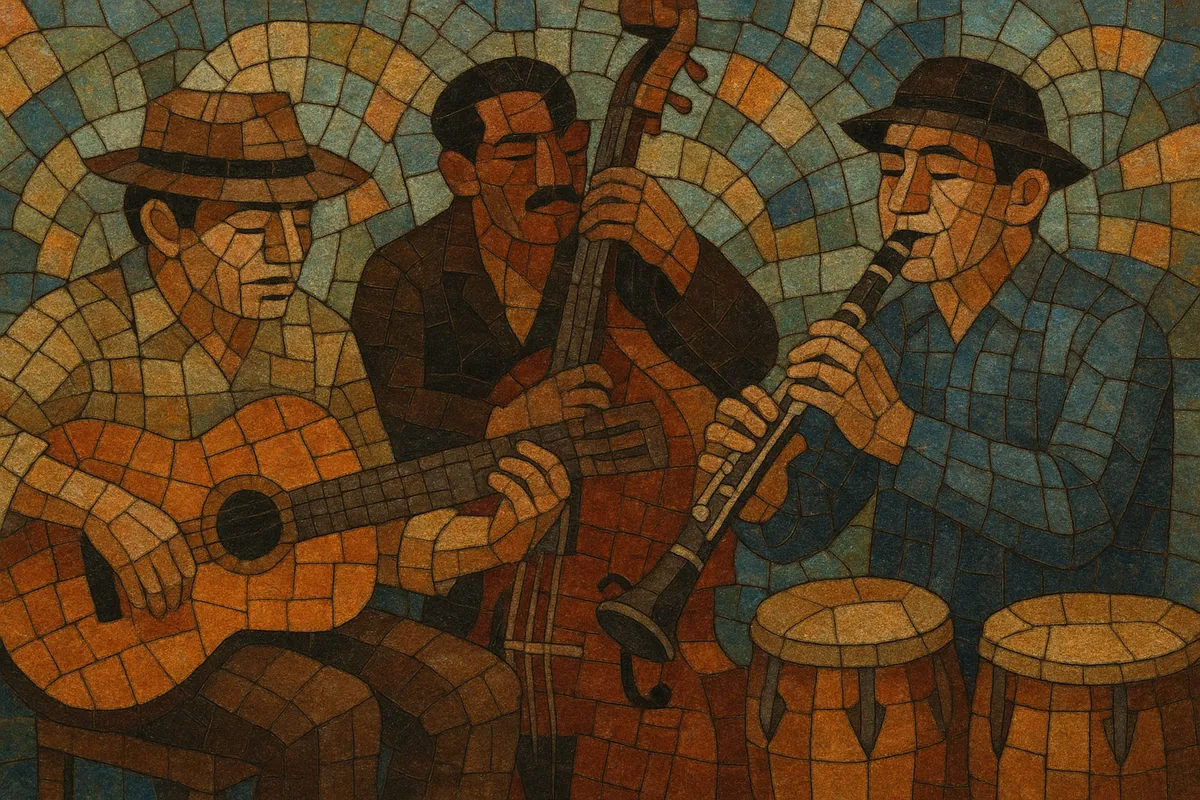Jazz guachaca is a Chilean, working‑class take on jazz and swing that blends the rhythmic feel and harmony of small‑combo jazz with local popular forms such as cueca, bolero, and tango.
Born in the bohemian bars and neighborhood clubs of Santiago and Valparaíso, the style is closely associated with guitarist–composer Roberto Parra, who adapted gypsy‑jazz guitar language to Chilean idioms. Typical ensembles center on acoustic guitar, double bass, light percussion, and sometimes clarinet or saxophone, delivering a swinging, danceable pulse and colloquial, often humorous lyrics about love, nightlife, and everyday life.
Musically, it favors straightforward swing grooves, Django‑inspired rhythm guitar ("la pompe"), walking bass lines, and familiar jazz cadences (II–V–I), while incorporating cueca hemiola accents and bolero/tango phrasing. The result is a warm, street‑wise, and highly social form of jazz rooted in Chile’s popular culture.
Jazz guachaca emerged in Chile’s mid‑20th‑century bohemian milieu, especially in Santiago’s Mapocho district and port‑city venues in Valparaíso. Guitarist and songwriter Roberto Parra synthesized the swing feel and gypsy‑jazz guitar vocabulary of Django Reinhardt with Chilean popular forms—cueca, bolero, and tango—crafting a style that felt both cosmopolitan and unmistakably local. The term “guachaca,” Chilean slang evoking a humble, working‑class, festive spirit, reflected both the music’s social base and its aesthetic: sophisticated harmony played with barrio attitude.
While jazz guachaca circulated informally for decades, Roberto Parra’s repertoire—cuecas, boleros, and swing numbers—became widely known through performances and recordings tied to theater and nightlife. A major public milestone was the late‑1980s success of the play “La Negra Ester,” based on Parra’s Décimas; its pit band (La Regia Orquesta) showcased the style to new audiences. In the 1990s, Chilean groups such as Los Tres and the Ángel Parra Trío revisited Roberto Parra’s songbook and swing vocabulary, helping catalyze a revival that connected the style with contemporary rock, indie, and jazz circuits.
Festivals, club nights, and the broader “Movimiento Guachaca” helped preserve the tradition while inviting younger jazz and popular musicians to adopt its danceable swing, colloquial storytelling, and small‑combo format. Today, jazz guachaca functions as a living bridge between Chile’s popular/folk traditions and the global language of jazz, informing arrangements in indie, Latin alternative, and Chilean jazz scenes while remaining a convivial, dance‑oriented practice in bars and neighborhood cultural centers.


